4 Tourbillons at Once – Harry Winston Histoire de Tourbillon 10 (Live Pics)
When one, two or even three tourbillon regulators are not enough...
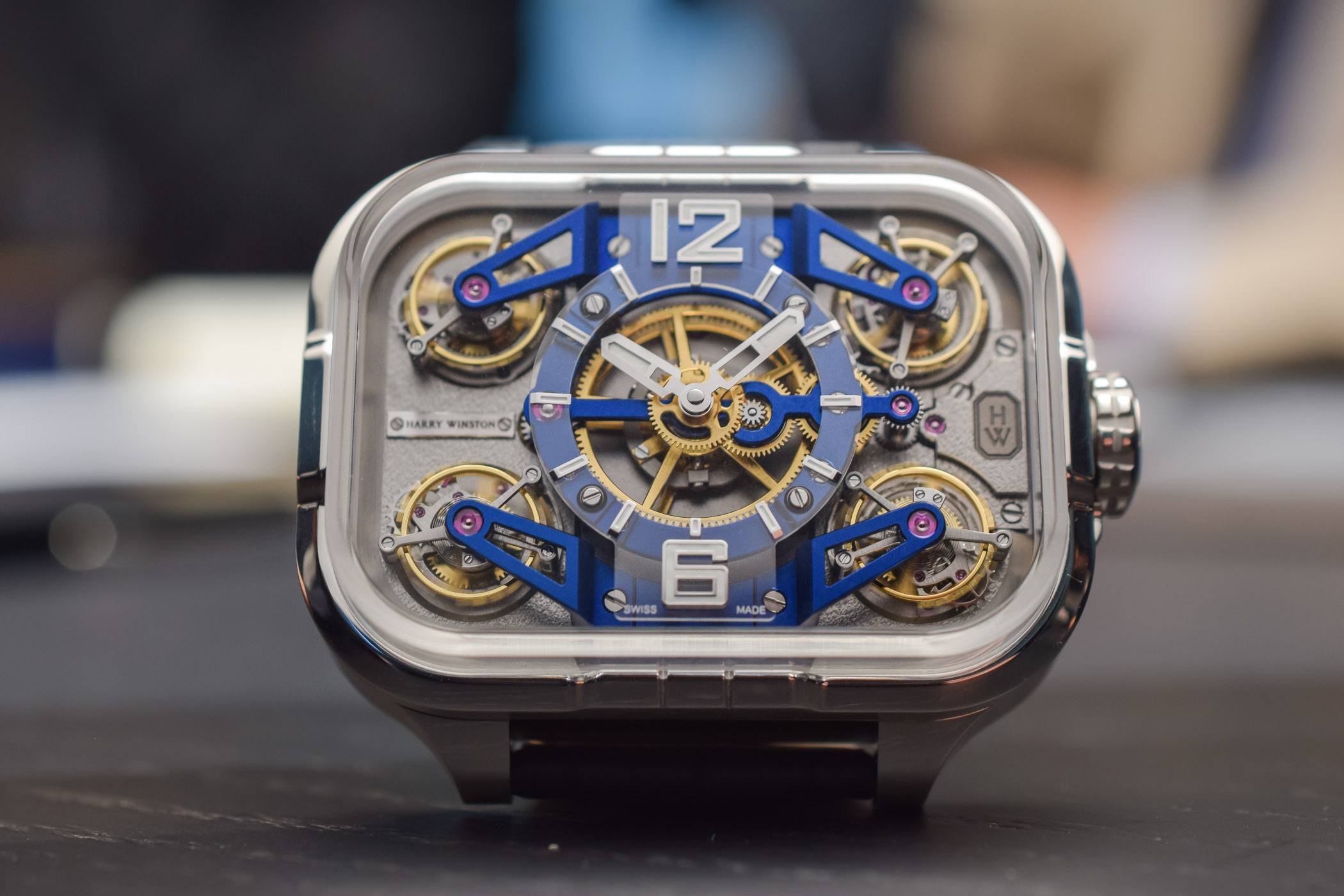
The “Histoire de Tourbillon” saga by Harry Winston is coming to an end. This series of watches was the home for some of the most extravagant pieces created by the brand, together with the Opus series. Having previously used tourbillons with single, double or triple axes, combined (or not) with single or double tourbillons or a carousel, Harry Winston’s latest creation is the last page of an impressive book. But like all good stories, the end is mind-blowing. Meet the Harry Winston Histoire de Tourbillon 10, the first watch ever equipped with four tourbillons in a single movement.
Background: Multiple Regulator Watches
Recently, our technical editor Xavier wrote the perfect story to start this article: “A Technical Perspective – Understanding the Concept of Multiple-Regulator Watches“. This couldn’t be more accurate in this context. But before we move to the reasons behind the use of multiple regulators, let’s have a quick overview of the industry.
Most watches are based on a single regulator architecture. However, for various reasons, some watchmakers decided that more regulators could provide better chronometric results. For instance, a double balance or even a double tourbillon isn’t really a surprise anymore. We’ve seen several watches with such movements – Dufour Duality, Journe Resonance, Armin Strom Resonance, MB&F LM2, Breguet Chronograph 7077, Vacheron Twin Beat or Zenith Defy 21… And many, many more.
Then comes the rare birds. Having two regulators is already a challenge. Three or four is the exception. Think of the Antoine Preziuso Tourbillon des Tourbillons, with no fewer than three tourbillons rotating on a large carousel. And then there’s the Roger Dubuis Excalibur Quatuor, with four angled balances on its dial. Moving to the topic of tourbillons, we know about several double and even triple tourbillon watches. However, no watch to our knowledge was ever fitted with four separate tourbillons in a single movement. Certainly, Greubel Forsey has a watch named the Quadruple Tourbillon, however, we’re talking about two double tourbillons (or bi-axial tourbillons). This watch features “only” two regulators. Thus, Harry Winston has come up with something totally unprecedented.
Why have more than one balance wheel, when a single one can already do the job pretty well? There are multiple reasons for this, however, the basic idea is to improve chronometry. It can be to regulate additional complications – such as a chronograph with its own regulator, to keep the timekeeping part of the watch free of interferences. It can also be to compensate for the errors of each regulator. And in this instance, the more regulators you have, the better the average result you’ll get at the end. And here’s the raison d’être of the Harry Winston Histoire de Tourbillon 10.
The Harry Winston Histoire de Tourbillon 10
As we mentioned in the introduction, the Harry Winston Histoire de Tourbillon 10 will be the last watch in this series of timepieces. However, the final chapter is a true watchmaking masterpiece. We won’t start debating about the design of this watch – obviously, over the top – or even the relevance of such a watch – such extreme watches are irrelevant anyway, and this is why they have to exist. So let’s see what makes this Histoire de Tourbillon 10 such an extraordinary creation.
Certainly, Harry Winston’s latest creation is a beast of a watch. Don’t expect to fly under the radar when wearing it. The imposing rectangular case measures 53.3mm x 39.1mm x 17.6mm – I’ll even quote the brand here, “the piece is as much a vessel as it is a watch“. It is topped by a massive and highly raised sapphire crystal, the same material used for the dial itself. Time is, however, the only indication that this watch will give, and it is displayed centrally, on a raised sub-dial. The rest of the watch is all about technicality.
Three editions of the Harry Winston Histoire de Tourbillon 10 will be available. Ten pieces will be made in 18k white gold, ten pieces in 18k rose gold and one unique piece in Winstonium, a specific platinum alloy. The latter can be recognized thanks to its two large blue tourbillon bridges. The Winstonium and white gold watches are mounted on alligator leather straps with large scales and topstitched with a 950 platinum thread. The pink gold version launches a new bracelet colour: black with copper highlights enhanced by topstitching in rose gold thread.
Let’s move on to the movement itself. The four tourbillons of the HW4702 calibre, which has no less than 673 components (with 78 components per tourbillon), can be seen in the four corners of the case. Note that these tourbillon are making a revolution in 36 seconds, and not one minute as often seen. The idea of using multiple regulating mechanisms is to take advantage of the qualities of each one and harness their unique way of reacting to gravity, the effects of which the tourbillon is designed to offset. Thus, even though each will run at its own rate and won’t mark the same time as the others, a complex series of three differentials will negate and average their positions, resulting in a supposedly extreme precision of the time indicated by the watch. Four tourbillons, three differentials, one unified indication of the time.
Check the video below to see how this impressive watch works in the metal:
The architecture of the movement is symmetrical. On each side, one double spring barrel distributes its power to a pair of tourbillons, each running independently. Connected to these two tourbillons is a first differential, which will average the rate of the left side of the watch. The same architecture is used on the right side of the watch. A third differential, which is oversized and located in a central position, does the job of averaging the two previous differentials and transmitting its information to the juxtaposed hands.
However, chronometry is ruled by other factors than the quality of the regulators. The quality of the power flow that feeds the regulating mechanisms is another major source of deviation. While four regulators, all connected by differentials, will effectively help to create a precisely averaged indication of the time at an instant, chronometric results should be constant over the entire length of the power reserve… However, since it is based on an unwinding spring, the system has its flaws – in short, the delivery of the torque to the regulators isn’t constant over the duration of the power reserve.
To negate most of the effects of this decreasing flow of energy, the Harry Winston Histoire de Tourbillon 10 is equipped with two pairs of fast-winding barrels that are overlaid, mounted successively, and then connected to the tourbillons. As a result, the energy is not shared across the four corners of the movement but distributed as required. Altogether, you can expect this movement (if perfectly regulated, of course) to be one true master of precision.
The four tourbillons, all running at 21,600 vibrations/hour or 3Hz consume a lot of energy, hence the relatively short power reserve of 55 hours. As you would expect, the movement is stunningly decorated, with modern finishes, such as frosted main plate on the dial side, X-shaped bridges on the back, straight-brushed and sandblasted surfaces but also the classic decorations such as anglages or bevelled wheel spokes.
The Harry Winston Histoire de Tourbillon 10 is a truly impressive watch, not only because it’s the only timepiece equipped with four tourbillons, but also in its execution. It is a statement piece, with no other purpose than to be an extreme concept – which is reflected in the price, from CHF 700,000 to CHF 770,000 depending on the version. More details at www.harrywinston.com.

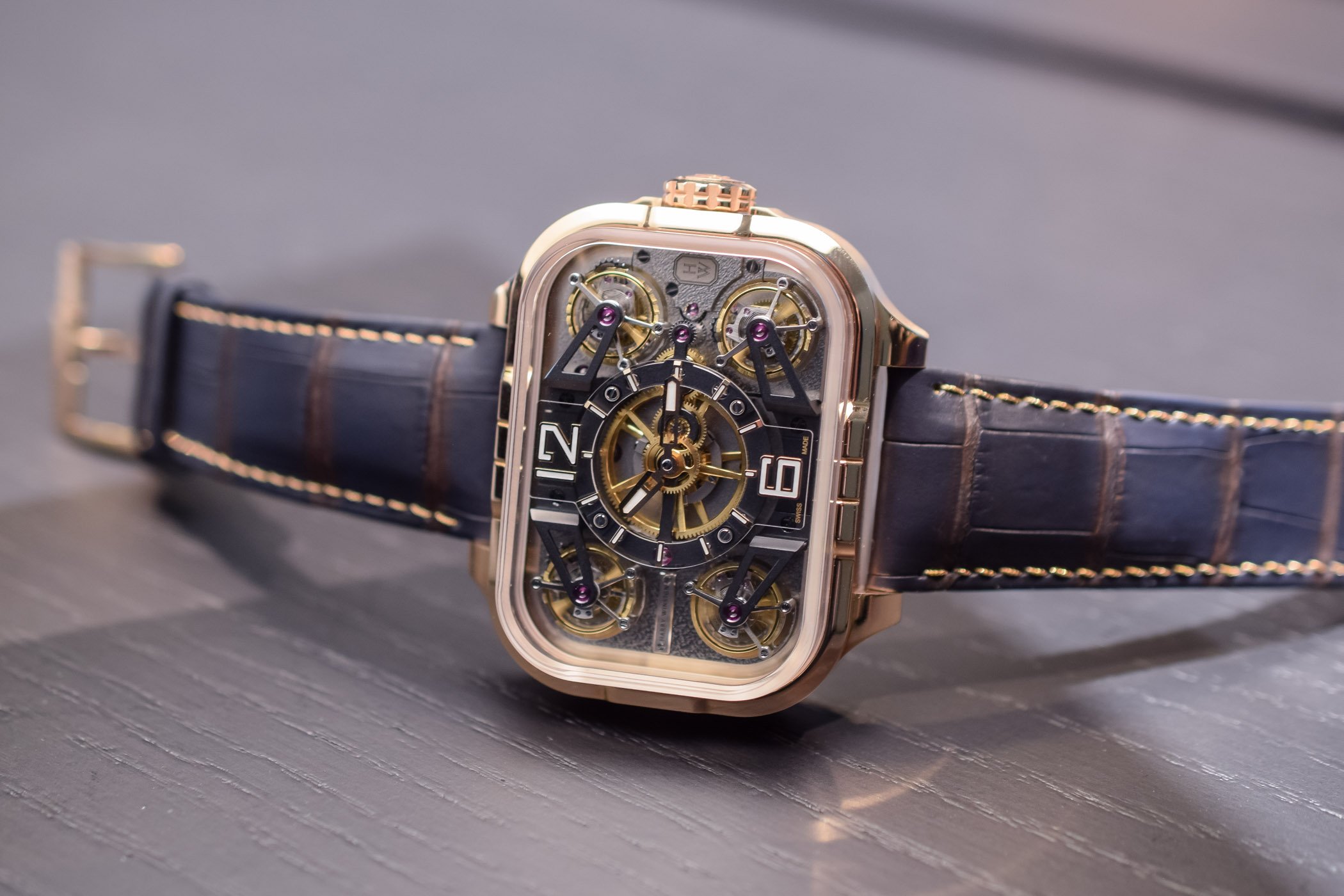
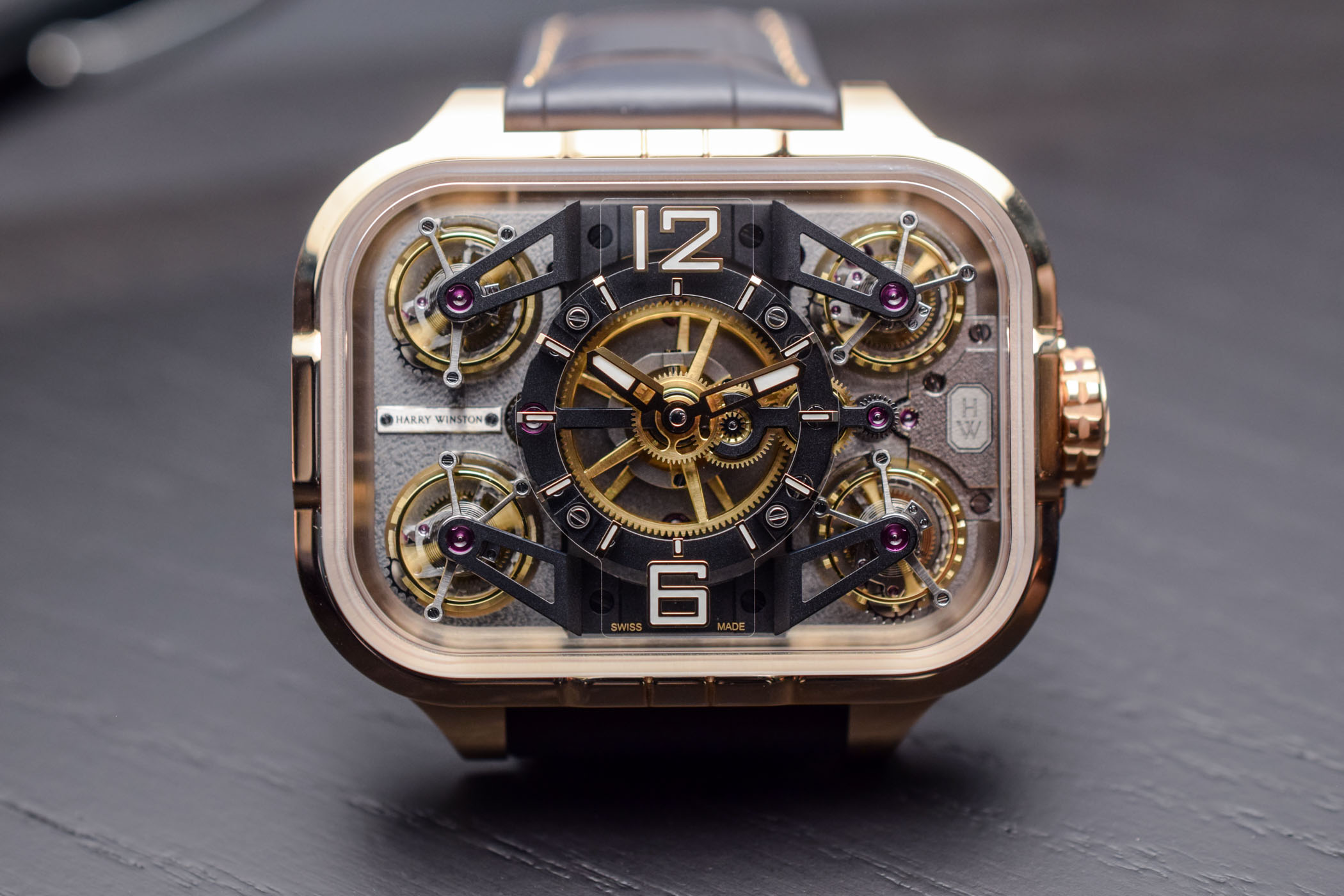
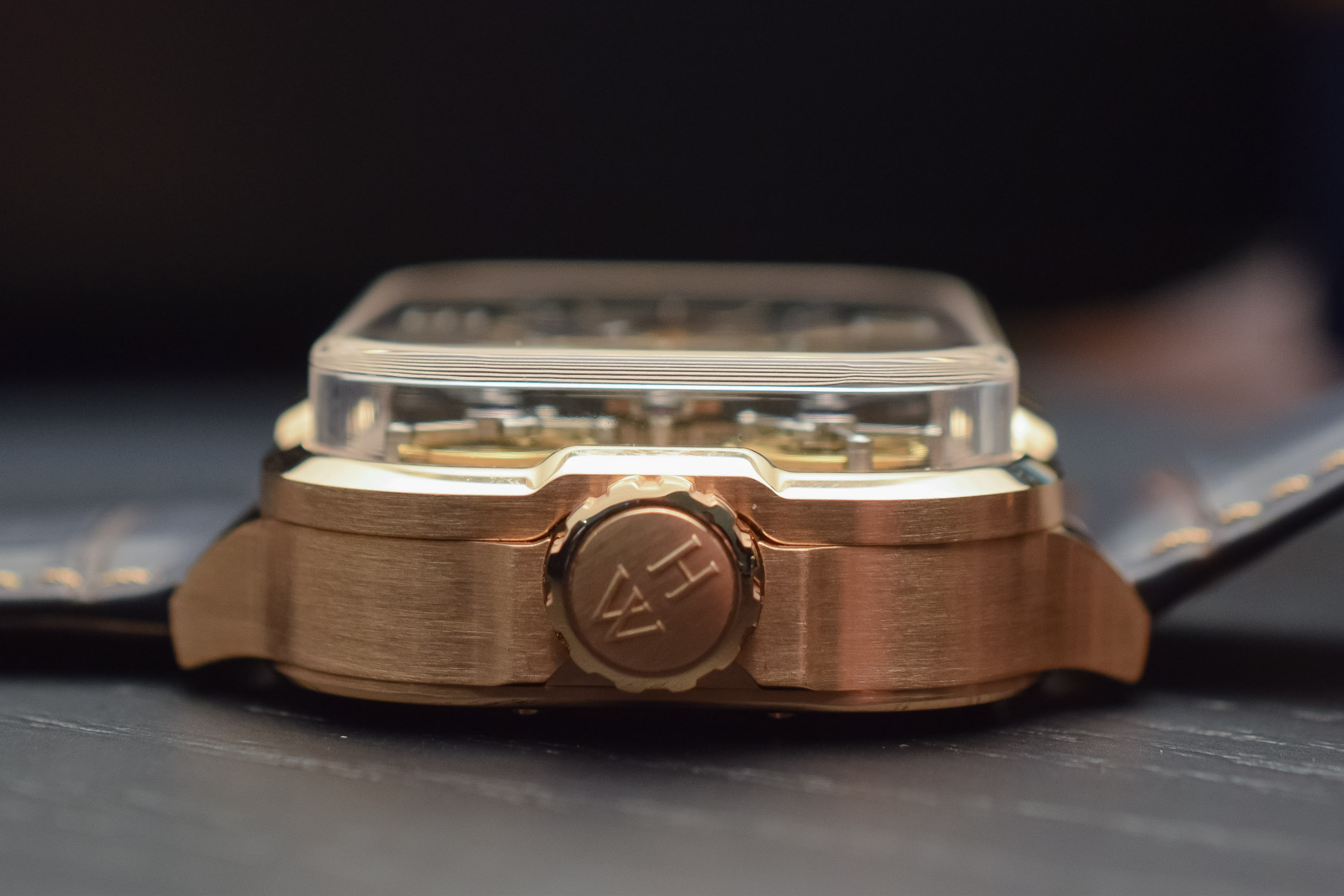
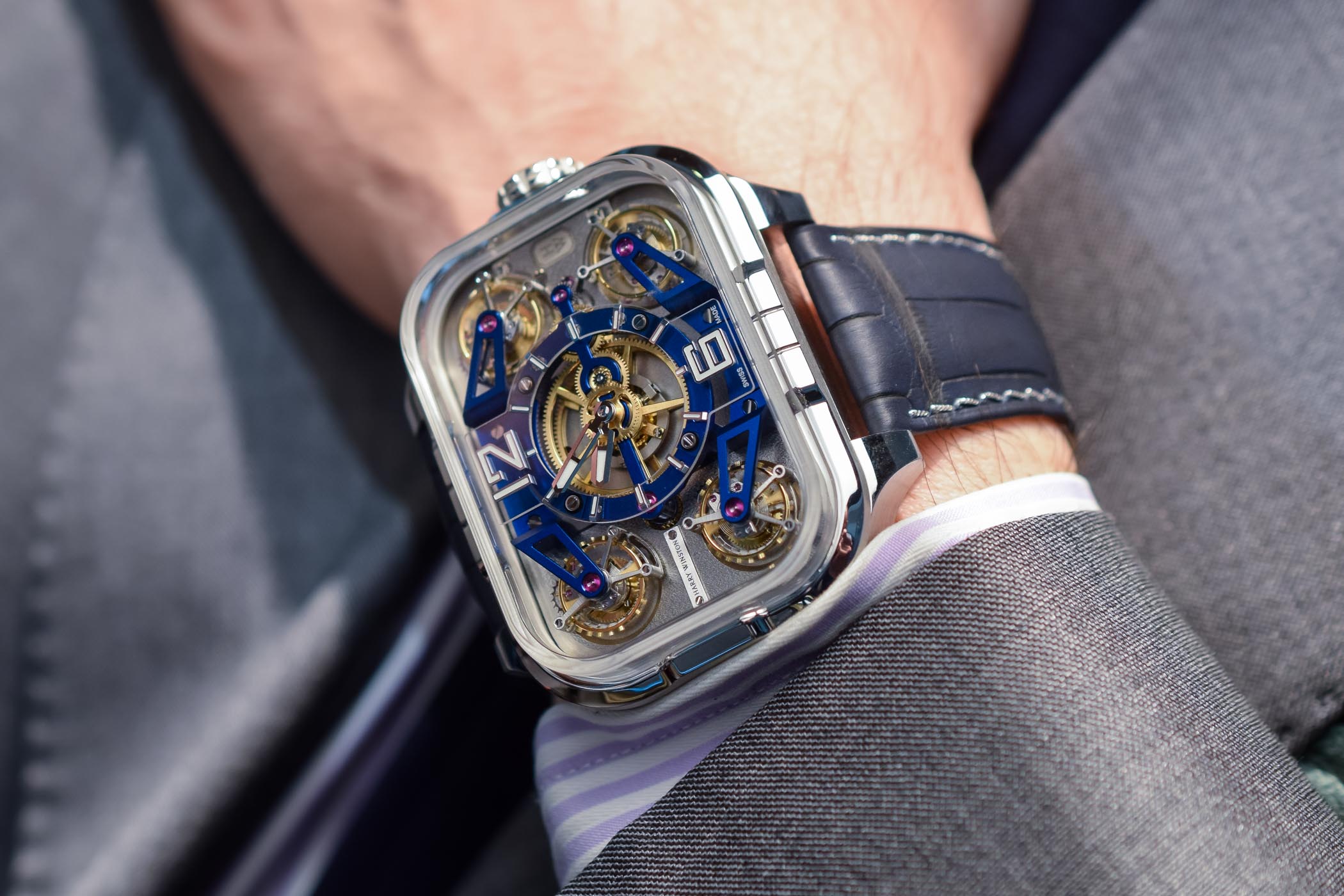
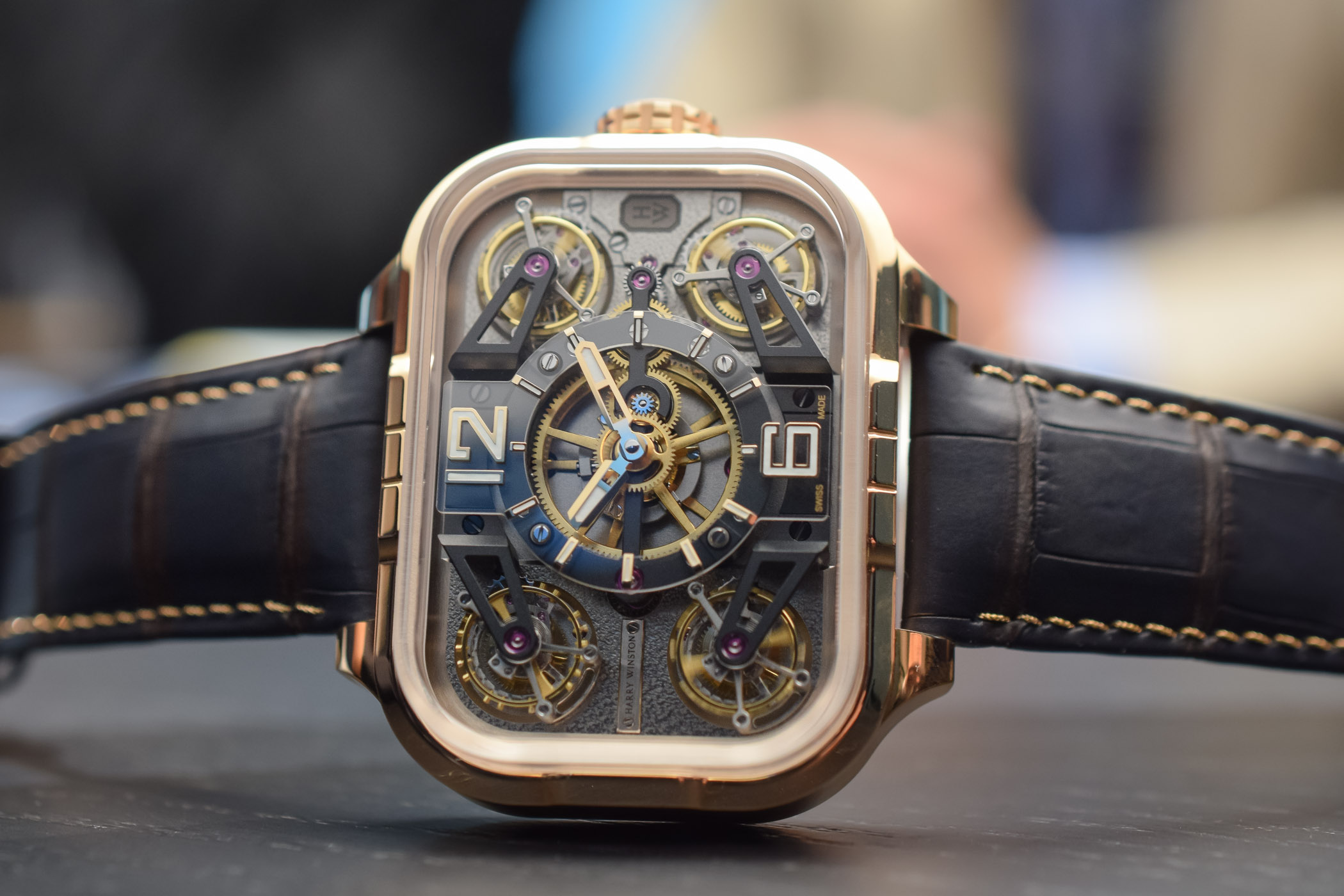

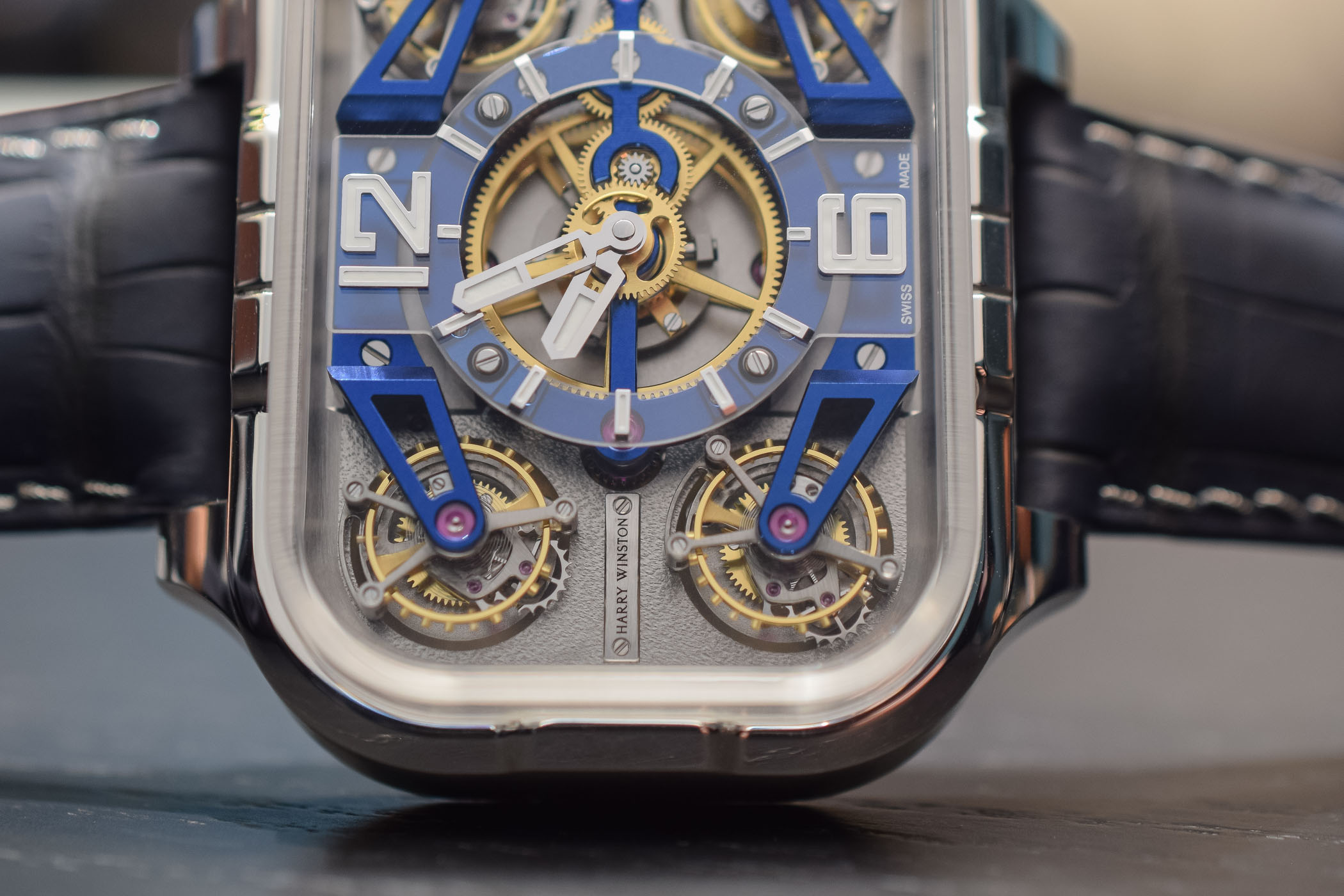



1 response
Nah.
Not impressed.
Finishing? Phah!